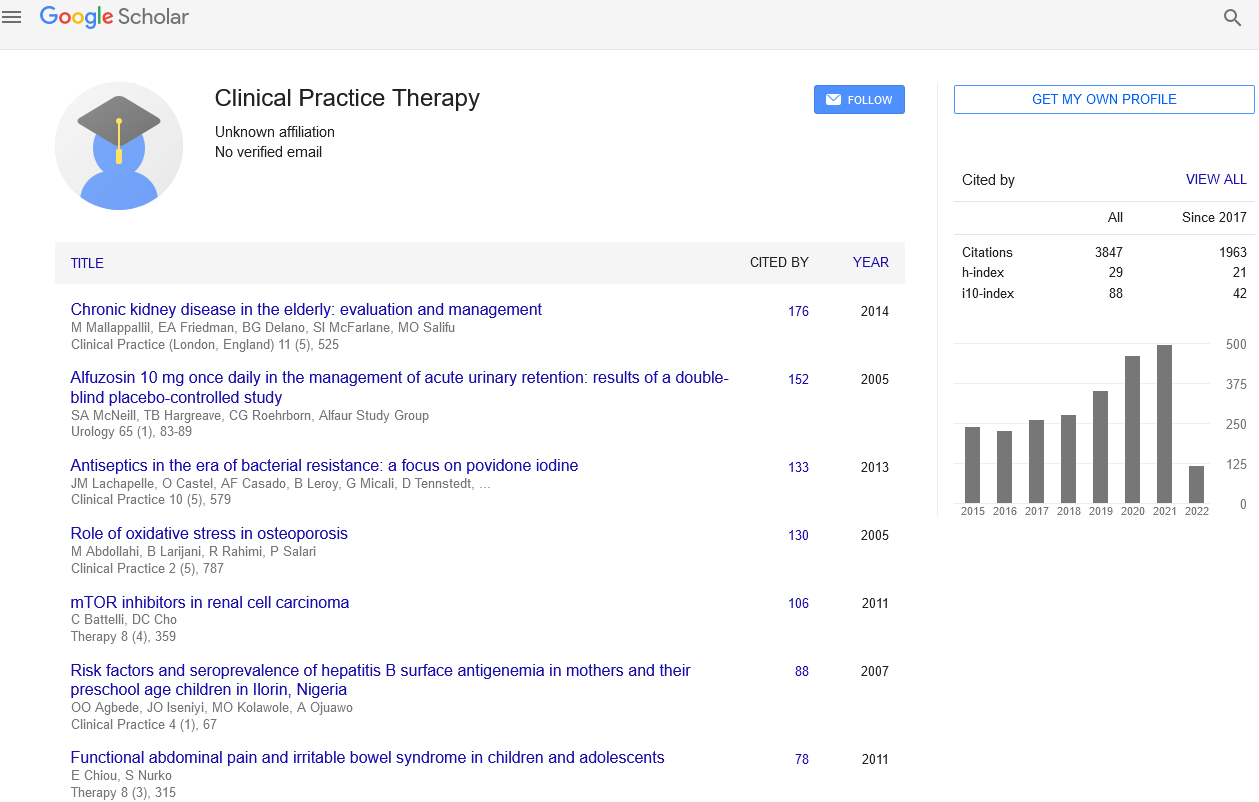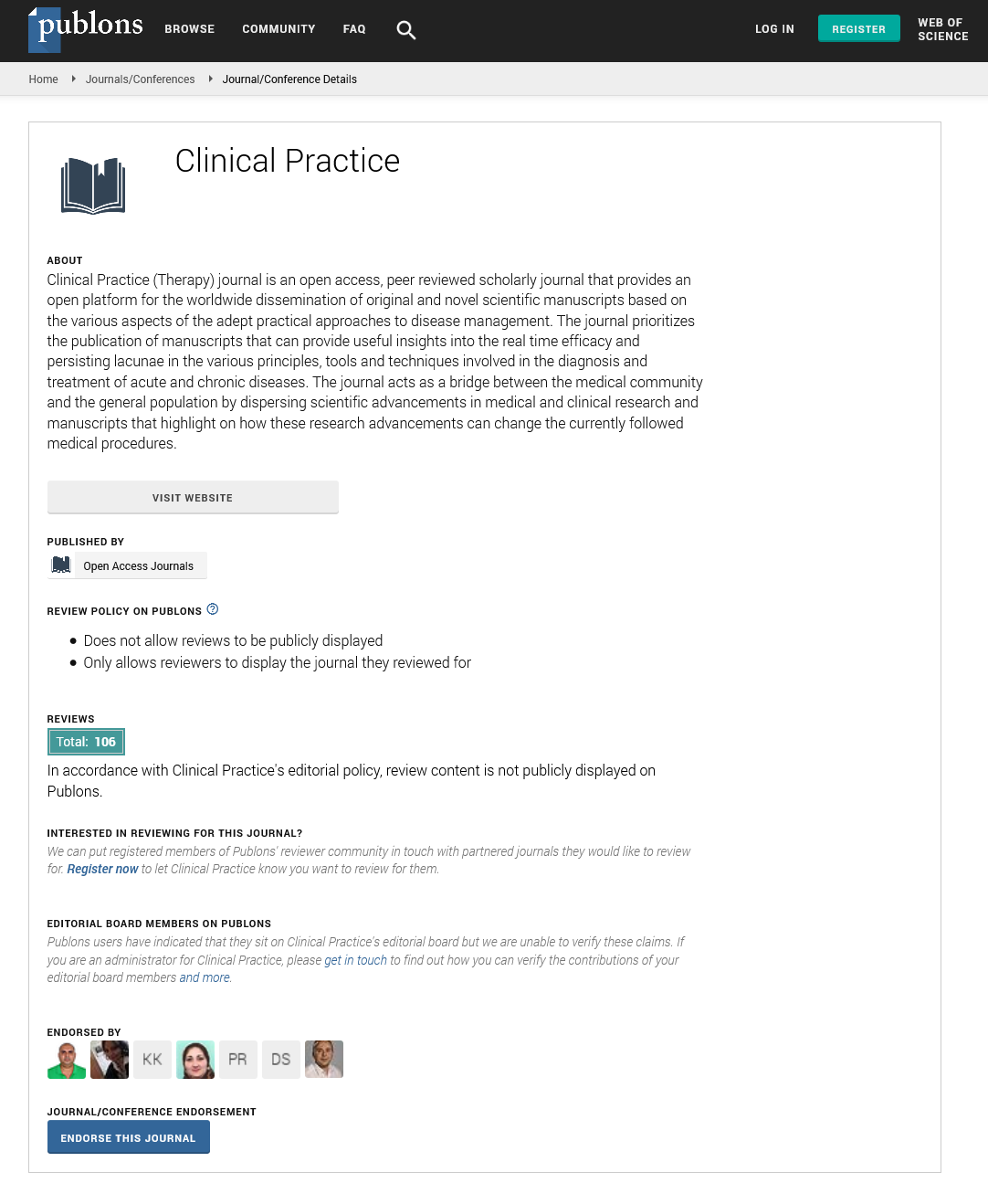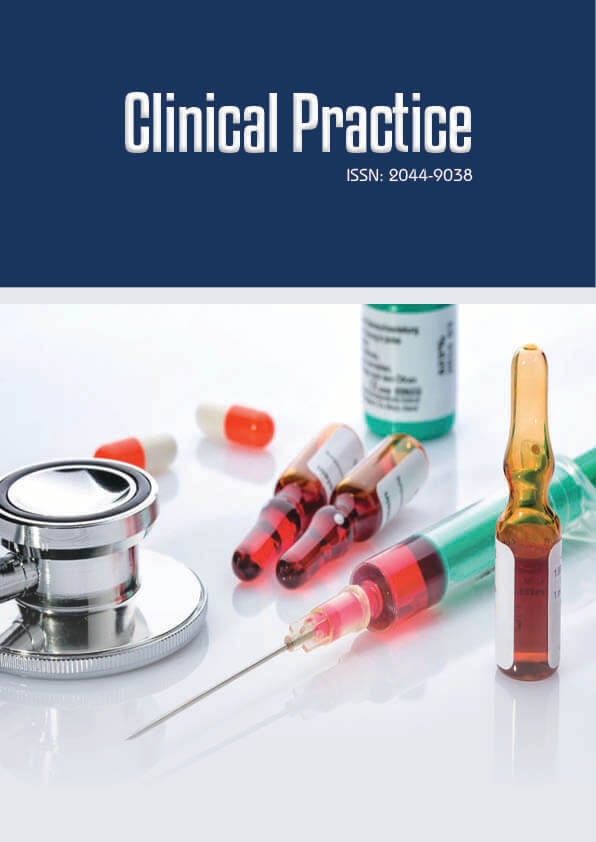Opinion Article - Clinical Practice (2025) Volume 22, Issue 1
Primary Pulmonary Meningioma: A Rare and Uncommon Lung Tumor
Hossam Elshekhali*
Department of Intensive Care Unit of Mediclinic Parkview Hospital, UAE
- *Corresponding Author:
- Hossam Elshekhali
Department of Intensive Care Unit of Mediclinic Parkview Hospital, UAE
E-mail: hossan@yahoo.com
Received: 01-Mar-2025, Manuscript No. fmcp- 25-158678; Editor assigned: 03-Mar-2025, Pre-QC No. fmcp-25-158678 (PQ); Reviewed: 17-Mar-2025, QC No. fmcp-25-158678; Revised: 21-Mar-2025, Manuscript No. fmcp- 25-158678 (R); Published: 28-Mar-2025, DOI: 10.37532/2044-9038.2025.22(1).1-3
Abstract
Primary pulmonary meningioma is an exceedingly rare and uncommon lung tumor that originates from the meningothelial cells of the pleura or the bronchial mucosa. Despite its rarity, understanding its clinical characteristics, diagnostic challenges, and treatment strategies is essential for clinicians. This opinion article examines the pathophysiology, clinical presentation, and management of primary pulmonary meningioma, highlighting the importance of distinguishing it from other lung tumors. With limited cases reported in the literature, this article aims to raise awareness of this rare tumor and encourage further research into its pathogenesis and optimal treatment approaches.
Keywords
Primary pulmonary meningioma • Lung tumor • Pleura • Meningothelial cells • Bronchial mucosa • Diagnosis • Treatment • Rare tumor
Introduction
Primary pulmonary meningioma (PPM) is an extremely rare and unusual form of lung tumor that arises from the meningothelial cells located in the pleura or bronchial mucosa. This tumor is often underrecognized due to its rarity and similarity in presentation to other more common lung tumors. While meningiomas are most commonly found in the central nervous system, primary pulmonary meningiomas represent a distinct entity that warrants attention for accurate diagnosis and appropriate treatment. Due to the scarcity of documented cases, there is still a lack of consensus on the optimal management and prognosis of this condition. The purpose of this opinion article is to provide an overview of primary pulmonary meningioma, shedding light on its pathophysiology, clinical manifestations, diagnostic considerations, and therapeutic options [1-3].
Pathophysiology of primary pulmonary meningioma
Primary pulmonary meningioma arises from the meningothelial cells, which are a type of mesothelial cells that line the pleura and bronchial mucosa. These cells, typically found in the central nervous system (CNS), can occasionally give rise to benign or malignant growths in unusual locations, such as the lungs. The mechanism of development for PPM remains poorly understood, with most cases presenting as solitary, well-demarcated, and encapsulated masses.
Several hypotheses suggest that PPM may result from aberrant mesothelial differentiation or reactive changes to chronic inflammation or other unknown stimuli in the lung. However, the precise etiology remains unclear due to the lack of significant data and well-conducted research on this rare condition.
Clinical presentation
Primary pulmonary meningiomas are often asymptomatic or present with non-specific symptoms. The rarity of this tumor and its indistinct symptoms can delay diagnosis, as they may overlap with more common pulmonary diseases. Key clinical features include:
Cough:
Patients may experience a persistent dry cough, which can be mistaken for a respiratory tract infection or other lung conditions.
Dyspnea:
Shortness of breath is a less frequent but possible symptom, especially if the tumor obstructs airways or grows large enough to impair lung function.
Chest Pain:
Some patients may report localized chest pain, although this is typically mild and not severe enough to raise concern on its own.
Hemoptysis:
In rare cases, patients may experience coughing up blood, but this is generally more indicative of other lung diseases, such as malignancies [4-10].
Given the non-specific symptoms, it is not uncommon for primary pulmonary meningiomas to be incidentally discovered during imaging studies, such as chest X-rays or CT scans, performed for unrelated reasons.
Diagnostic considerations
The diagnosis of primary pulmonary meningioma is challenging due to its rare occurrence and the overlap of symptoms with other more common lung pathologies. Key diagnostic tools and steps include:
Chest imaging:
CT scans or MRI may reveal a well-defined, solitary mass located in the lung or pleura, though its radiographic appearance can resemble other types of lung tumors, including benign hamartomas or metastatic lesions.
Histopathology:
Definitive diagnosis requires tissue biopsy and histological examination. Primary pulmonary meningiomas typically display meningothelial cells with a characteristic whorled pattern, similar to those found in CNS meningiomas. Immunohistochemical staining may show positive results for epithelial markers such as EMA (epithelial membrane antigen) and vimentin, which help differentiate PPM from other lung tumors.
Histological differential diagnosis:
The challenge lies in differentiating PPM from other benign and malignant lung tumors, such as pleural mesotheliomas, lung adenocarcinomas, and metastatic lesions, all of which may share overlapping imaging characteristics.
Laboratory investigations:
Additional tests may be performed to rule out other causes of symptoms, including lung infections, other lung cancers, and systemic diseases.
Management of primary pulmonary meningioma
Given the rarity of this tumor, there is no established standard treatment protocol for primary pulmonary meningioma. However, treatment approaches are typically tailored to the individual patient and the characteristics of the tumor. The main treatment options include:
Surgical resection:
Surgical excision is the most common and recommended treatment for primary pulmonary meningioma, especially for localized, well-demarcated tumors. The surgical approach typically involves lobectomy or segmental resection, depending on the tumor's size and location. Complete surgical removal is associated with favorable outcomes and low recurrence rates.
Radiotherapy:
In cases where surgical resection is not possible or in the presence of recurrent tumors, radiotherapy may be considered. However, the role of radiation in treating PPM is not well defined, and more research is needed to determine its effectiveness.
Surveillance:
After surgical excision, close follow-up with regular imaging studies is essential to monitor for recurrence. Given the benign nature of most PPMs, recurrence is rare, but monitoring ensures early detection if it occurs.
Prognosis
The prognosis for patients with primary pulmonary meningioma is generally favorable, as most cases are benign and respond well to surgical treatment. Recurrence is uncommon, and the majority of patients have a good long-term outcome. However, the prognosis may vary depending on factors such as the tumor's size, location, and the presence of any associated complications.
Conclusion
Primary pulmonary meningioma is a rare and often overlooked tumor that arises from meningothelial cells in the pleura or bronchial mucosa. Though typically benign, its clinical presentation can be vague and easily confused with other more common pulmonary conditions. Early recognition through imaging and histological examination is crucial for proper diagnosis and management. Surgical resection remains the treatment of choice for most patients, with a generally favorable prognosis. However, given the limited number of cases reported in the literature, further studies are needed to better understand the pathogenesis, optimal treatment strategies, and long-term outcomes of primary pulmonary meningiomas.
References
- Rodrigues FB.Endovascualar treatment versus medical care alone for ischemic stroke: a systemic review and meta-analysis. BMJ. 57, 749-757 (2016).
- Jackson, Peter. The multiple ontologies of freshness in the UK and Portuguese agri food sectors. Trans Inst Br Geogr. 44, 79-93 (2019).
- Salinet ASM. Do acute stroke patients develop hypocapnia? A systematic review and meta-analysis. J Neurol Sci. 15, 1005-1010 (2019).
- Lewis RJ, Dutertre S, Vetter I et al. Conus venom peptide pharmacology. Pharmacological Reviews. 64, 259-98 (2012).
- Südfeld S.Post-induction hypotension and early intraoperative hypotension associated with general anaesthesia. Br J Anaesth. 81, 525-530 (2017).
- Makam AN, Nguyen OK. An Evidence-Based Medicine Approach to Antihyperglycemic Therapy in Diabetes Mellitus to Overcome Overtreatment. Circulation. 135, 180-195 (2017).
- Chandalia M, Lutjohann D, von Bergmann K et al. Beneficial effects of high dietary fiber intake in patients with type 2 diabetes mellitus. N Engl J Med. 342, 1392-8 (2000).
- Gething MJ. Role and regulation of the ER chaperone BiP. Seminars in Cell and Developmental Biology. 10, 465-472 (1999).
- Schepers E, Meert N, Glorieux G et al. P-cresylsulphate, the main in vivo metabolite of p-cresol, activates leucocyte free radical production. Nephrol Dial Transplant. 22, 592-596 (2006).
- Ricci Z, Ronco C, Amico GD et al. Practice patterns in the management of acute renal failure in the critically ill patient: an international survey. Nephrol Dial Transplant. 21, 690-696 (2006).



